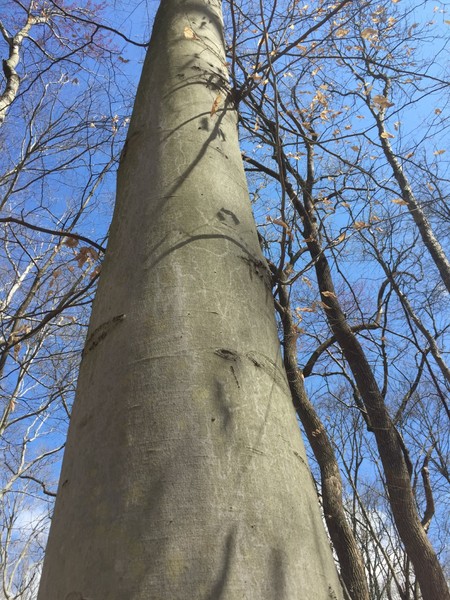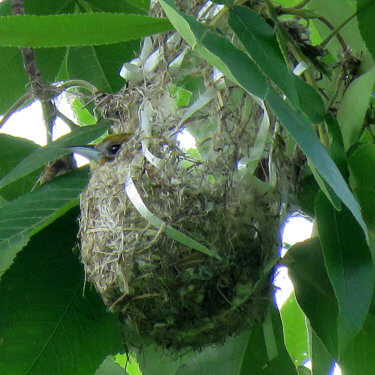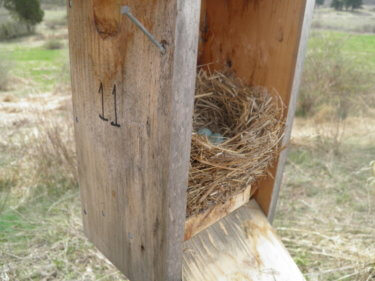tremendous trees
Totally terrific trees.
Totally terrific trees.
learn.
Trees have three main parts: leaves, bark, and roots. They each have a purpose for the tree to survive. Today we are going to look at the bark.
The bark of a tree is super important. Bark is the “skin” of a tree, and protects inner part of the tree from severe weather and harsh sun, bumps from animals, helps retain water, and even protects from forest fires. Bark is also a home for many animals. Not only insects like bark beetles but bats like to roost under the bark of the shagbark hickories.
craft.
 bark rubbing:
bark rubbing:
Grab that nature journal you created last week and take it outside.
you will need:
Find a tree. Place a blank sheet of your journal up to the bark. Take your crayon and rub away. Don’t do it too hard or you will break your paper.
Do this with many different trees. There are trees with smooth, scaly, bumpy, or craggy bark.
Try to identify the tree and label your bark rubbing.
Extra challenge: take your journal outside and try to draw different types of bark.
nature id.
This tree is found throughout Pennsylvania. The bark is smooth, the leaves turn bright yellow in the fall, and the nuts feed lots of animals.

Answer: This is a beech tree from Crow’s Nest Preserve. The bark scars easily and you may see drawings or initials in the bark (please don’t do that – they remain because the tree is unable to heal itself, and opens the tree up to infection.)

Always something new to discover.
Bird nests can be found in many different shapes and sizes. They could be an intricate hanging basket like an oriole, or a scrape in the ground like a killdeer. We are going to look at nests in trees.
learn.
A bird nest is place for a bird to lay eggs and take care of them until they grow wing feathers that are large enough for flight. When a baby bird grows those feathers we say it has fledged. Once the babies fledge the nest is no longer needed. Some bird nests are holes in trees, some are made with grasses, some with spider webs, or even made with trash. Spring is the time for birds to start making nests.
Here are five backyard birds every child under five should know: https://www.everythingbirds.com/articles/birds-every-kid-should-learn-before-five/
fun fact.
Bald Eagles construct the largest nest of all birds in North America. It can weigh more than 2 tons (4,000 pounds!), measure 8 feet wide, and 10-15 feet deep.
play.
Go on a nature walk around your backyard or in your neighborhood. Don’t forget your journal! You can write down all the nests you see. Some may be leftovers from last year, some may be new. See if any bird is flying in and out of the area of the nest.
Collect things you think a bird might use for a nest. You might even find something around your house. Once you collect everything pretend to be a bird! Use your thumb and pointer finger as a beak and try to weave the items you collected into a bird nest.
If you want to get super dirty, use mud. (Robins use mud to help the nest keep its shape.)
Older kids and adults, you can be a scientist. Join Nest Watch. For more than a decade people like you have helped scientist by collecting valuable data on the successes and failures of nesting birds.
nature id:
If you visit our nature preserves you might wonder what is inside the wooden boxes you see. Today’s nature id challenge has the answer! Hint: this type of nest belongs to a that bird was declining in numbers because of habitat loss. They typically make their nests inside hollow logs.

Answer: Eastern Bluebird nest. This picture of a bluebird box was taken at Green Hills Preserve. You can’t miss these birds, they are bright blue on the top and rusty on the bottom. Decades ago, Natural Lands started the bluebird box monitoring, currently we monitor more than 420 bluebird boxes!
Today we’ll learn about the flowers and seeds that come from trees. 
learn.
Spring is upon us and trees are in bloom. You may have noticed on your walks bright yellow forsythia, big showy magnolias, dainty redbuds, beautiful pink cherry, or puffballs of pear flowers. Soon we will get the show of lilacs, dogwoods, crapemyrtle and all the beautiful blooms of spring.
Most trees go through a series of eight growth stages that extend from their dormant state over the winter to the time when they grow fruit. As winter ends, buds develop on the trees. Once these buds burst, clusters of green start to open, eventually turning into buds that become the flower blossoms. Flowers get pollinated by wind, insects, bats, and many other ways. Then the flowers produce a fruit that contains a seed.
nature id:
Do you know what this tree is? Here’s a hint: In 1912, Mayor Yukio Ozaki of Tokyo gifted 3,000 of these type of trees to the nation’s capital.

Answer: cherry blossom. This cherry tree is growing at Stoneleigh: a natural garden. Cherry blossom season in the U.S. is from mid-March to mid-April. Many people say spring arrives when the cherry trees start blooming.
play.

You can use nature to make art.
Andy Goldsworthy is a world–renowned artist that uses found objects in nature to create art. The art is temporary as the wind blows and the rain falls, will disperse its beautiful creations.
Get inspired by his artwork and create your own.
Don’t forget to take your journal and draw out what you would like to create. Take a picture of it when done and post it to our Facebook page.
What does a leaf do?

Mark Williams
Go outside and thank a leaf. A leaf takes in energy from the sun and carbon dioxide in the air and turns it into sugars (food for the plant) and oxygen. They basically take the air we breathe out and make air for us to breathe in.
Leaves can be either deciduous (fall off during the winter) or evergreen (stays on the tree during the winter). They can be broad and flat or look like needles.
Use these guides to learn more about leaves and identify trees:
craft.
leaf prints with crayon:
With permission of your adult, collect some leaves from your yard (or a preserve), and create a leaf print. It could be as simple as laying the leaf on a table, bumpy side up. Place a white sheet of paper over the leaf and rub the paper with a crayon.
leaf prints with paint:
Spread out newspaper and place a leaf down with the bumpy side up. Paint the leaf and then carefully pick it up and place it on a clean spot on the newspaper. Place a clean piece of paper over the painted leaf and gently rub with your finger to make a painted print.
older kids:
Take a walk around your neighborhood or just look out your window and try to identify any trees you see. In your journal you can make some notes:
Use your notes and drawings to do research online to identify the trees you saw.
nature id:
Can you guess what this critter is? Here’s a fun fact: This bug curls a leaf around itself for protection, using silk. When the leaf is crushed it has a nice smell.

first instar spicebush swallowtail caterpillar
Answer: This spicebush caterpillar lives at Hildacy Preserve. The back end of the spicebush swallowtail has two large eyespots to make it look like a snake to scare away predators. The spicebush butterfly and the eastern tiger swallowtail both lay their eggs on the spicebush. More than 20 species of birds including both gamebirds and song birds such as Ring-necked Pheasant, Bobwhite, and Ruffed Grouse have been known to feed on spicebush.
learn.
 You can be a dendrologist. The study of trees is called dendrology. In Greek ‘dendron’ means trees and ‘ology’ means study of. Adopt a tree in your yard, neighborhood or park and observe it all year long.
You can be a dendrologist. The study of trees is called dendrology. In Greek ‘dendron’ means trees and ‘ology’ means study of. Adopt a tree in your yard, neighborhood or park and observe it all year long.
Here are things you can look for each season:
Become a citizen scientist.
Invasive diseases and pests threaten the health of America’s forests. Scientists are working to understand what allows some individual trees to survive, but they need to find healthy, resilient trees in the forest to study. That’s where concerned foresters, landowners, and citizens (you!) can help. Tag trees you find in your community, on your property, or out in the wild using TreeSnap!
nature id:
Lenape native peoples used this tree as a fever reducer.

Darin Groff
Answer: This dogwood grows at Binky Lee Preserve. Dogwood flowers are not “true” flowers. White petals are actually leaves that surround miniature yellowish-green flower heads. Fruit of dogwood is known as a stone fruit. It is oval, berry-like, rightly colored, and filled with one or two seeds. The fruit and seeds of the dogwood represent an important source of food for wildlife.
play.
Here’s two fun games you can play with trees.
40/40 save all:
Using a tree as the home-base, one person is ‘in’ and counts to 40 while other players run and hide. As soon as the person who is ‘in’ spots someone hiding, they run back to the tree, shouts out the name of the hider and where they are hiding, and that person is now ‘out’. The only way the hider can save themselves is if they get to the tree first and shouts ’40-40 save all’ – then everyone is safe and the original person remains ‘in’. If all the hiders are found then the first person who was ‘out’ is the next person to be ‘in’ at the tree.
hug-a-tree:
This game should be played in an area where there are plenty of trees – during a nature walk would be perfect. Players get into pairs and one person is blind-folded. They are then led to a specific tree by their partner. Here, the blindfolded ‘tree-hugger’ feels the tree and has to remember, the shape, texture and smell of the tree. Then they are taken back to the starting point, their blindfold is removed and they have to try and identify their tree.
Note: make sure there are no fuzzy vines up the tree; that is poison ivy.